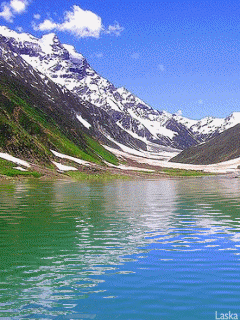jueves, 25 de febrero de 2021
CHARACTERISTICS OF ANIMALS
What do all animals have in common?
• They feed on other living organisms to get nutrients.
• They take in oxygen from the environment.
• They have sense organs to see, hear, feel, taste and smell.
• They reproduce.
• They move.
 |
| Elephant |
 |
| Monkey annoying a dog |
 |
| Ladybug flying |
 |
| Frog jumping |
 |
| Kitten playing |
What do animals need to survive?
Animals need food, oxygen and water.
• Animals feed on living organisms to get the nutrients they need.
• Land animals get oxygen through the air. Aquatic animals get oxygen from the water.
• All animals need water, but some can live on very little.
There are millions of species of animals in the world. Species are groups of animals that are similar to each other. Animals live in different habitats. All the animals that share a habitat are called the fauna.
SPECIES
Climate in Europe
What factors influence the climate of an area?
Latitude. Areas closer to the equator have warmer climates. The Sun’s rays reach these areas directly all year. Areas farther from the equator have colder climates. Some areas receive no sunlight for part of the year. Most of the world’s population lives between 30 ºN and 30 ºS.
Wind or air masses absorb the ground’s heat as they move over an area. Winds bring warm or cold air and moisture.
Altitude. Higher altitudes have lower temperatures. The air is more humid and there is a lot of precipitation. Most of the world’s population lives at an altitude of no more than 200 m.
Relief. Mountains create a barrier for wind and clouds that affects climate. As air passes over elevated land, its temperature decreases.
Distance from water. Water takes longer to change temperature than land. On cold days, water warms the air and on hot days, it cools it. This keeps temperatures constant. Over 50 % of the world’s population lives within 200 km of a sea or ocean.
What climate zone is Europe in?
Almost all the European continent is in the temperate climate zone, with a small part in the cold zone. The continent has a wide range of climates because it is a large area with varying relief, coastal areas and vast areas of inland terrain.
miércoles, 24 de febrero de 2021
The hydrology of Europe
What is the hydrology of Europe?
Europe is surrounded by seas and oceans, like the Mediterranean Sea and the Arctic and Atlantic Ocean. Most rivers in Europe are long and navigable.
 |
| Mediterranean Sea |
 |
| Arctic Ocean |
 |
| Atlantic Ocean |
 |
| Navigable river |
The Arctic and the Atlantic drainage basins have long rivers that flow over flat
terrain. The rivers in the Arctic Ocean Basin are large and irregular, and some,
like the Pechora, freeze in winter. Rivers in the Atlantic Ocean Basin are large
and regular, like the Seine, and often have broad estuaries.
 |
| Pechora |
 |
| Seine |
The Mediterranean drainage basins and the rivers that flow into them, like the
Po, are narrow. These rivers are irregular and their sources are high up in the
mountains.
 |
| Po river in Venice (Italy) |
 |
| Po river in Venice (Italy) |
Europe also has inland drainage basins, like the Caspian Sea. Rivers here cross
the East European Plain and are long, like the Volga, which is Europe’s longest
river. They are only navigable in summer, because they freeze in winter.
Where are the main lakes in Europe?
Around 77 000 km2 of Europe is covered by lakes.
 |
| Lake Bled |
 |
| Lake Como |
European lakes are grouped
according to their location.
Northern lakes cover large areas of Finland, Sweden, Norway and Russia. Southern lakes are small and shallow, like Lake Albufera in Valencia.
Alpine lakes are located in the Alps, in Switzerland and in the north of Italy.




















































